Ever felt that nagging worry before a hike, like you’ve forgotten something crucial? We’ve all been there.
You’re all set for an epic day out, but there’s that little voice in your head asking, “Did I pack enough water? What if I get lost?” It’s enough to make you want to chuck the whole idea and stay home with a cuppa.
But hold on a tick—what if you could silence that pesky voice for good? Imagine striding out with the confidence of a seasoned pro, knowing you’ve got everything sorted. No more pre-hike jitters or mid-trail panic.
Sound good? Well, buckle up, because we’re about to make that happen. Let’s dive into the ultimate day hiking checklist that’ll have you packing smart and hiking happy. Ready to hit the trail with you essential gear?
Know Your Trail: Tailor Your Pack to Your Adventure
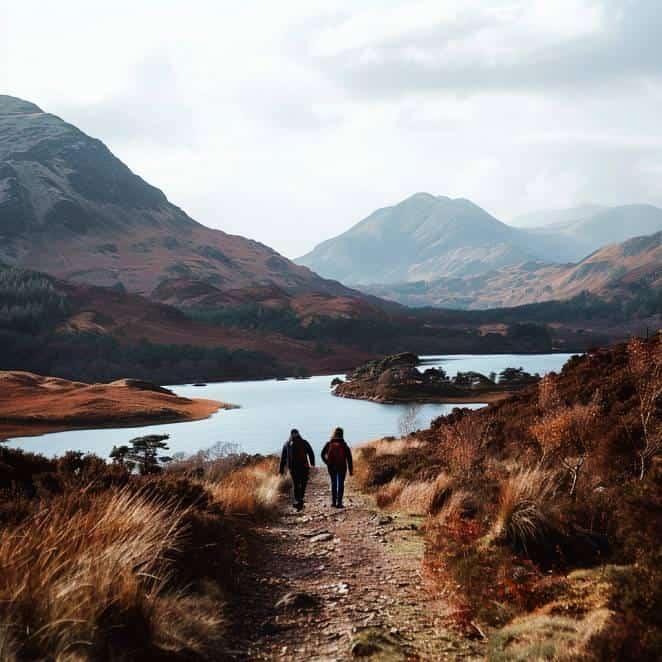
Before you hit the trail, it’s crucial to understand the nature of your hike. You wouldn’t pack the same things for a relaxing walk in the Cotswolds as you would for a challenging hike in the Scottish Highlands.
Consider these factors:
- Duration: Is it a quick morning jaunt or a long day out?
- Terrain: Are you facing steep climbs or leisurely flat paths?
- Weather conditions: Sunshine, rain, or unpredictable mountain weather?
- Your fitness level: Be honest with yourself here, mate!
These elements will shape your packing decisions for your hiking gear. For instance, a longer hike on challenging terrain might require more food and water, sturdier hiking boots, and extra layers.
Meanwhile, a short walk on a well-marked trail might need less gear, but don’t let that lull you into a false sense of security!
Gear Up: Your Hiking Essentials Toolkit
Now, let’s talk about the bread and butter of your day hiking essentials. This is the gear that’ll keep you comfortable, safe, and ready for whatever Mother Nature throws your way.
Backpack
Your backpack is like your mobile home on the trail. Choose one that fits comfortably and has enough space for all your gear. Look for features like:
- Padded shoulder straps and hip belt
- Multiple compartments for easy organisation
- Water-resistant material
A good 20 to 30-litre pack should do the trick for most day hikes.
Footwear
Your feet are your most important hiking tool, so treat them right! Hiking boots or trail runners are your best bet. They should fit well, provide good ankle support, and have grippy soles. And don’t forget those socks! Merino wool socks are a hiker’s best friend – they wick moisture, prevent blisters, and keep your feet comfy all day long.
Clothing
When it comes to clothing, think layers, layers, layers! It’s like building a scrumptious sandwich, each layer serving a purpose:
- Base layers: These sit next to your skin, wicking away sweat. Merino wool or synthetic materials are ideal.
- Mid-layer: This is your insulation. A fleece or light down jacket works well.
- Outer layer: Your shield against the elements. A good rain jacket is essential for those unexpected showers.
Don’t forget a pair of sturdy hiking pants and a long-sleeve shirt for sun protection. And always pack an extra layer – the weather can turn on a sixpence in the hills!
Navigation Tools
Even if you think you know the trail like the back of your hand, always pack navigation tools. A map and compass are the dynamic duo of hiking navigation. Yes, even in this age of smartphones! Why? Because batteries die, signals fail, but a map and compass are always reliable.
That said, a GPS device or a hiking app on your phone can be incredibly useful too. Just remember to download offline maps before you set off!
Sun Protection
The sun can be a sneaky foe on the trail. Pack sunscreen, sunglasses, and a wide-brimmed hat. Your future self will thank you for avoiding that lobster look!
Safety First: Be Prepared, Not Scared
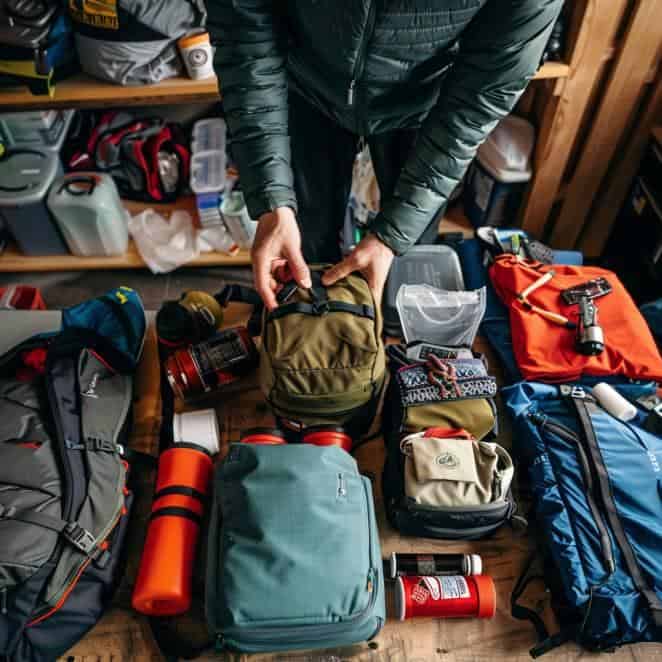
Now, we know no one likes to think about emergencies, but being prepared can make all the difference. It’s like carrying an umbrella – you hope you won’t need it, but you’re glad to have it when it rains!
First Aid Kit
A basic first aid kit is an absolute must. Include plasters, gauze, antiseptic wipes, pain relievers, and any personal medications. Remember, a first aid kit is only useful if you know how to use it, so brush up on your first aid skills before you hit the trail.
Emergency Shelter
Even on a day hike, an emergency shelter is a good idea. A lightweight emergency blanket or bivy bag could be a lifesaver if you get stranded overnight.
Fire-Starting Tools
Waterproof matches or a lighter, along with some fire lighters, can provide warmth and a way to signal for help in an emergency.
Signalling Devices
A whistle is a lightweight, effective way to signal for help. Three short blasts is the universal distress signal. A signalling mirror can also be useful for catching the attention of search and rescue teams.
Multi-tool or Knife
A Swiss Army knife or multi-tool can be incredibly handy for repairs, first aid, and other unexpected needs on the trail.
Headlamp or Flashlight
Even if you’re planning to be back before dark, a headlamp or flashlight (with extra batteries) is essential. You never know when a hike might take longer than expected, and you don’t want to be caught out in the dark!
Fuel Your Journey: Smart Food and Water Choices
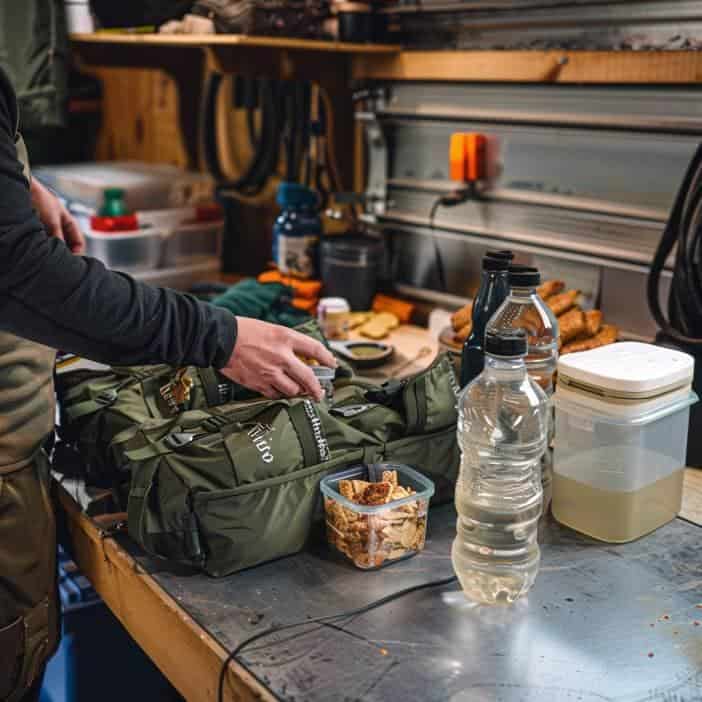
Proper fuel and hydration are crucial for a successful day on the trail. After all, you wouldn’t start a long car journey on an empty tank, would you?
Water
The amount of water you need depends on the length and difficulty of your hike, as well as the weather conditions. A good rule of thumb is to carry at least two litres of water for a full day hike. Use a water bottle or a hydration system – whichever you find more convenient.
Water Treatment
It’s always a good idea to carry a backup water treatment method. This could be water purification tablets, a lightweight filter, or even a UV purifier. You might not need it, but it’s better to have it and not need it than need it and not have it!
Snacks and Meals
Pack high-energy, nutrient-dense foods that won’t get squashed in your bag. Think nuts, dried fruits, energy bars, and sandwiches. And always pack a bit extra – hunger can turn a pleasant hike into a miserable slog faster than you can say “I’m starving!”
Comfort Boosters: Little Luxuries for Big Smiles
While not essential, these items can make your hike more enjoyable:
- Trekking poles: Great for stability on uneven terrain and taking pressure off your knees on descents.
- Camera: To capture those stunning views (but remember to enjoy the moment, too!).
- Binoculars: For wildlife spotting or admiring distant landscapes.
- Insect repellent: A must if you’re hiking in buggy areas.
- Portable charger: To keep your devices juiced up.
- Biodegradable toilet paper and trowel: For when nature calls in nature!
Tread Lightly: Hike with Heart and Leave No Trace
As hikers, we’re guests in nature’s home, so it’s our responsibility to treat it with respect. Follow the Leave No Trace principles:
- Plan and prepare
- Travel and camp on durable surfaces
- Dispose of waste properly
- Leave what you find
- Minimise campfire impacts
- Respect wildlife
- Be considerate of other visitors
Consider investing in eco-friendly gear options, like solar chargers or biodegradable soap. Remember, every small action counts towards preserving our beautiful hiking trails for future generations.
Pre-Hike Prep: Set Yourself Up for Success
Before you set off, run through this quick checklist:
- Research the trail and current conditions
- Inform someone of your hiking plans
- Check the weather forecast
- Charge your electronic devices
- Pack your bag the night before
Taking these steps can save you a lot of hassle and make sure you’re fully prepared for your adventure.
After the Trek: Nurture Your Gear and Yourself
After your hike, a bit of TLC goes a long way:
- Clean and dry your gear before storing it
- Check for ticks (those sneaky little blighters love hikers!)
- Rehydrate and have a nutritious snack or meal
- Reflect on your hike – what went well, and what could you improve for next time?
Make It Yours: Customise Your Checklist Like a Pro
Remember, this checklist is a starting point. As you gain more experience, you’ll learn what works best for you. Don’t be afraid to adjust your checklist based on:
- Seasons: You’ll need different gear for a summer hike versus a winter trek.
- Terrains: A forest hike requires different preparation than a mountain ascent.
- Your skill level: As you become more experienced, you might find you need less gear, or you might discover new items that enhance your hiking experience.
Tech on the Trail: Hike Smarter, Not Harder
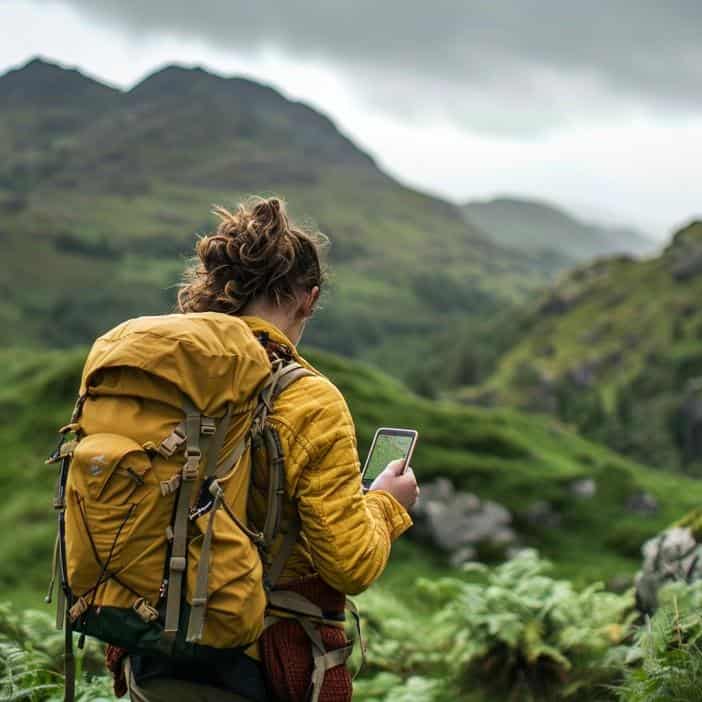
In this digital age, technology can be a great asset on the trail, but it’s important to use it responsibly.
Useful apps like AllTrails or Outdooractive can help with navigation and trail information. Wearable tech like fitness trackers or GPS watches can provide valuable data about your hike.
However, remember that technology should enhance your hiking experience, not dominate it. Always have a backup plan (like that trusty map and compass) in case your tech fails. After all, part of the joy of hiking is disconnecting from the digital world and connecting with nature!
Mind Matters: Hike Happy with Mental Prep
Hiking isn’t just a physical challenge – it’s a mental one, too. Before your hike, take some time to mentally prepare. Set realistic goals for yourself and manage your expectations.
If you’re feeling anxious about the hike, that’s perfectly normal. Take a deep breath and remind yourself why you’re doing this – for the joy of being in nature, for the sense of accomplishment, for the stunning views.
On the trail, practice mindfulness. Notice the feel of the earth beneath your feet, the sound of birds chirping, the smell of the forest. These mindful moments can turn a simple walk into a truly transformative experience.
Special Hikers, Special Needs: Tailored Tips for All
Hiking with Children
Taking kids on a hike? Brilliant! Start with shorter, easier trails and gradually work up to more challenging ones. Pack plenty of snacks and plan fun activities along the way, like a nature scavenger hunt. Remember, the goal is to foster a love of nature, not to break any speed records!
Hiking with Pets
If you’re bringing your four-legged friend along, make sure to pack essentials like water, food, and waste bags. Check trail regulations beforehand, as some areas have restrictions on pets. And always keep your dog on a lead unless in specified off-lead areas.
Accessibility in Hiking
For hikers with disabilities, there are often adaptive equipment options available, like all-terrain wheelchairs or specialised trekking poles. Many parks also offer accessible trails. Do your research beforehand and don’t hesitate to contact local hiking groups or park rangers for advice.
Seasonal Savvy Hiking: Master Every Weather Window
Each season brings its own joys and challenges to hiking. In summer, focus on staying cool and hydrated. Pack extra water and sun protection. Winter hiking requires more insulation layers, and snow gear like microspikes. Spring and autumn can be unpredictable, so be prepared for a range of weather conditions.
Capture the Magic: Pro Tips for Trail Photography
Capturing memories of your hike can be wonderful, but remember to balance it with enjoying the moment. If you’re using a smartphone, consider putting it in aeroplane mode to save battery. For more serious photographers, think carefully about which lenses to bring – every gram counts when you’re carrying it all day!
Trail Etiquette: Be the Hiker Everyone Loves to Meet
Good trail etiquette makes everyone’s hiking experience more enjoyable. Yield to uphill hikers, keep noise levels down, and always pack out what you pack in. When encountering wildlife, admire from a distance and never feed them.
Consider giving back to the trails you love by participating in trail maintenance events or supporting local conservation efforts. After all, we’re all in this together, working to preserve these beautiful spaces for future generations of hikers.
Your Ticket to Trail Triumph
Ready to conquer the great outdoors? With this foolproof day hiking checklist, you’re all set for adventure! We know the struggle of forgetting essentials or feeling unprepared – it can turn a dream hike into a nightmare.
But fear not, intrepid explorer! Armed with this guide, you’ll stride out with confidence, knowing you’ve got everything sorted.
Remember, preparation is your secret weapon. Each item on this list is a step towards an unforgettable day on the trails.
So, why wait? Dust off those hiking boots, grab your backpack, and start ticking off that checklist. The mountains are calling, and now you’re ready to answer!
Happy hiking, and may your adventures be as boundless as the horizon!
Trail Talk: Your Burning Questions Answered
What not to take on a day hike?
Leave the kitchen sink at home, mate! Skip heavy items like canned food, unnecessary electronics, or bulky clothing. Remember, every gram counts when you’re hauling it up a hill!
How to pack a day pack for hiking?
Think like a pro-packer! Place heavier items close to your back, mid-weight gear in the middle, and lighter bits on top or in outer pockets. Easy access is key for snacks and your rain jacket.
What should I pack for a 12-hour hike?
For a long day out, pack extra food and water, a reliable headlamp, and additional warm layers. Don’t forget to beef up your first aid kit – better safe than sorry on an epic adventure!
What is a good distance for a day hike?
It’s not one-size-fits-all! For beginners, 5-8km is a good start. Seasoned hikers might tackle 20-30km. Listen to your body and build up gradually. The trail’s not going anywhere!
Will I lose weight if I hike every day?
Lacing up those boots daily could indeed trim your waistline! But remember, it’s about the journey, not just the destination. Focus on the joy of hiking, and let any weight loss be a bonus.
Is it OK to hike on an empty stomach?
Your body’s like a car – it needs fuel to run! A light, nutritious brekkie will keep you energised on the trail. Think porridge, banana, or a whole-grain toast with peanut butter.
What’s something a hiker should always have before going on his first hike?
Knowledge is power, rookie! Research your trail, check the weather, and tell someone your plans. Oh, and don’t forget that all-important positive attitude!
What is the difference between hiking and trekking?
Think of hiking as a day out, while trekking’s more of a multi-day affair. Trekking often involves camping and covers more rugged terrain. Both are brilliant ways to explore nature!
What food to take hiking?
Pack a mix of quick-energy snacks and sustaining meals. Think nuts, dried fruit, energy bars, sandwiches, and maybe a cheeky chocolate bar for that summit celebration!
What’s considered a heavy pack for hiking?
If your pack’s weighing you down like a sack of spuds, it’s too heavy! Aim for no more than 10% of your body weight for a day hike. Your back will thank you later!
Is 30l too big for a day hike?
For most day hikes, 30l is like bringing a lorry to do a bike’s job! A 15-25l pack should suffice. But if you’re hiking with kids or in extreme conditions, 30l might be just right.
What food to take on a long walk?
For a lengthy stroll, pack a variety of slow-release energy foods. Think wholemeal sandwiches, nuts, cheese, and fruit. Don’t forget a treat to keep your spirits high!
What time of day is best to start a hike?
Early bird catches the worm – and the best hiking conditions! Starting early gives you more daylight, cooler temperatures, and often clearer skies. Plus, you’ll beat the crowds!
What size is best for day hikes?
For most day hikes, a 15-25l pack hits the sweet spot. It’s big enough for essentials but won’t weigh you down. Remember, the best size is one that fits all your gear comfortably!
How much water do I need for a day hike?
Stay hydrated, hiker! Aim for about 1/2 litre per hour of moderate activity in moderate temperatures. Adjust up for heat or intense hiking. When in doubt, bring a bit extra.
What food to take on a day hike?
Pack a mix of quick-energy snacks and more substantial fare. Trail mix, fruit, energy bars, sandwiches, and maybe some chocolate for a mood boost. Don’t forget to pack out your rubbish!
What should you not wear during a hike?
Ditch the denim and cotton, folks! They hold moisture and can lead to chafing and blisters. Opt for quick-drying, breathable fabrics instead. And leave those flip-flops at home!
What not to eat before a hike?
Avoid heavy, greasy foods that might upset your stomach on the trail. Steer clear of new or exotic foods, too. Stick to familiar, easily digestible meals before your hike.
Should I eat before or after a morning hike?
Both! A light breakfast before will fuel your hike, while a post-hike meal helps recovery. Listen to your body – if you’re peckish, have a snack. Happy hiking!
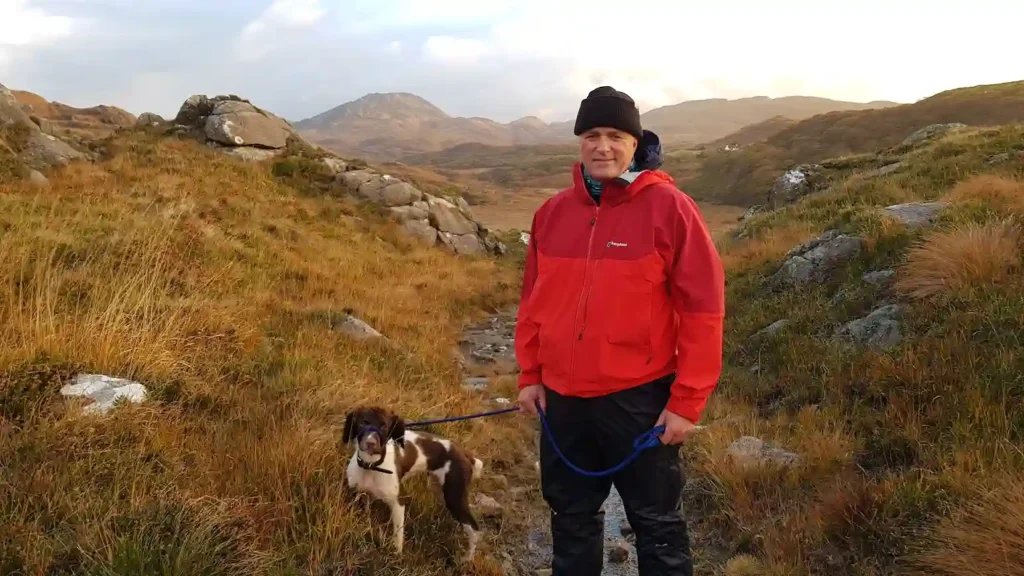
This is me, Will Hawkins, with my dog, Poppy, hiking on the west coast of Scotland

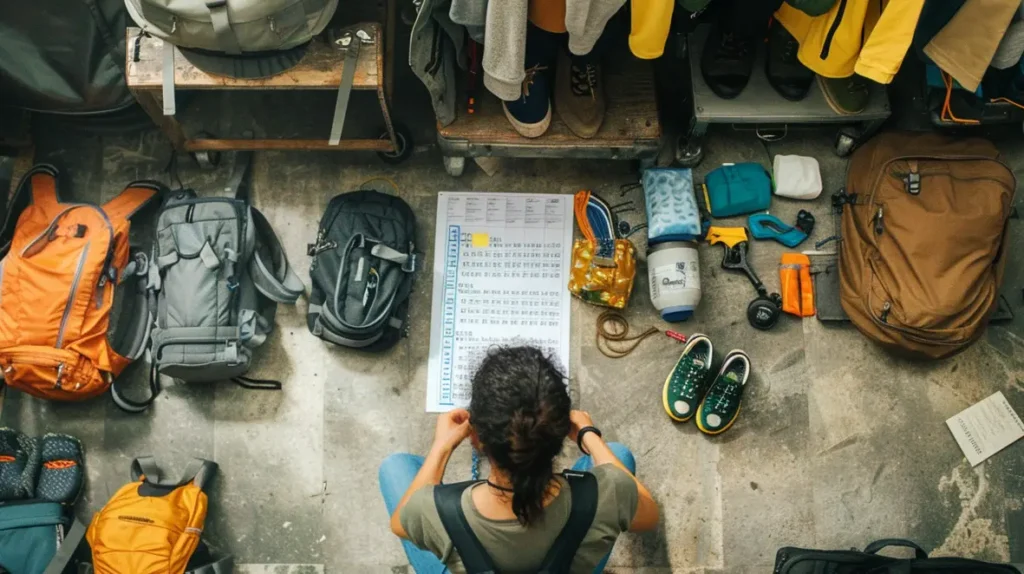
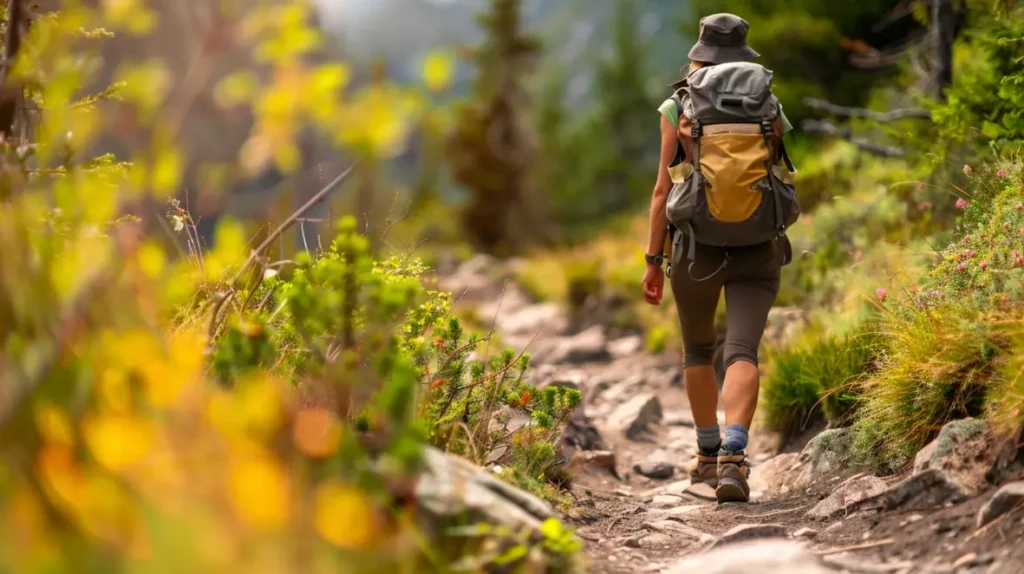
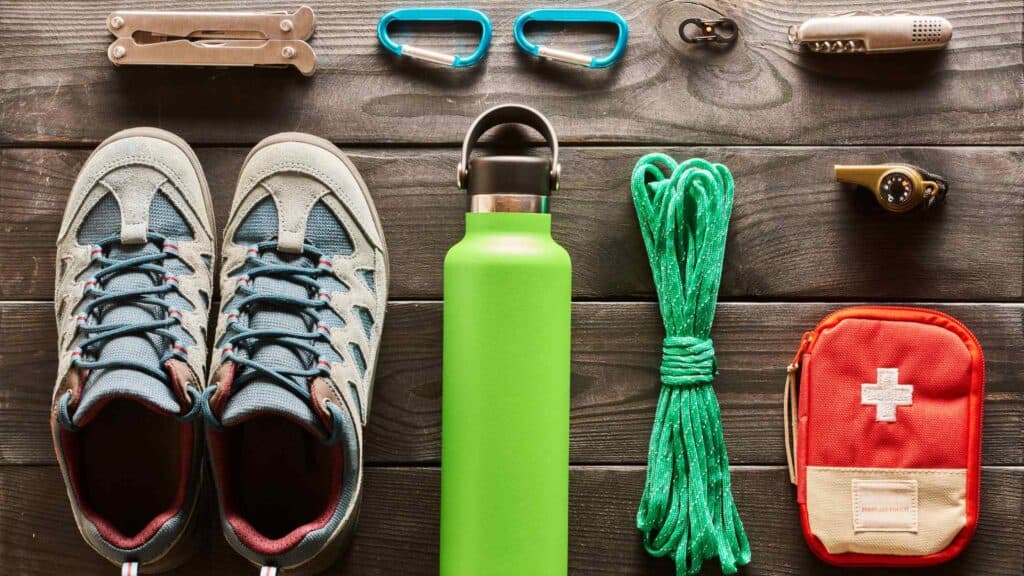
Pingback: Best Hiking Boots 2024: Top 8 Picks for Comfort & Durability
Pingback: Beat the Downpour: 15 Best Waterproof Hiking Trousers [2023]
Pingback: 10 Must-Experience Hiking Trails for Spring (UK) - Will Hawkins - Outdoor Adventure
Pingback: 7 Beginner Hiking Tips to Crush Trail Anxiety [2024 Guide]
Pingback: Jetboil Mini Mo: Safe, Simple & Superb [2024 Review]
Pingback: Best Backpacks for Men in 2023 - Will Hawkins - Outdoor Adventure
Pingback: Campfire Cooking Recipes: Guide to Outdoor Cooking | WBH
Pingback: Best Hiking Boots for Men (in 2022)
Pingback: Wilderness Water Purification: Your Essential Guide | WBH
Pingback: Navigation Techniques: How to Use a Map and Compass | WBH
Pingback: 75 Hiking Tips for Beginners (for 2024)